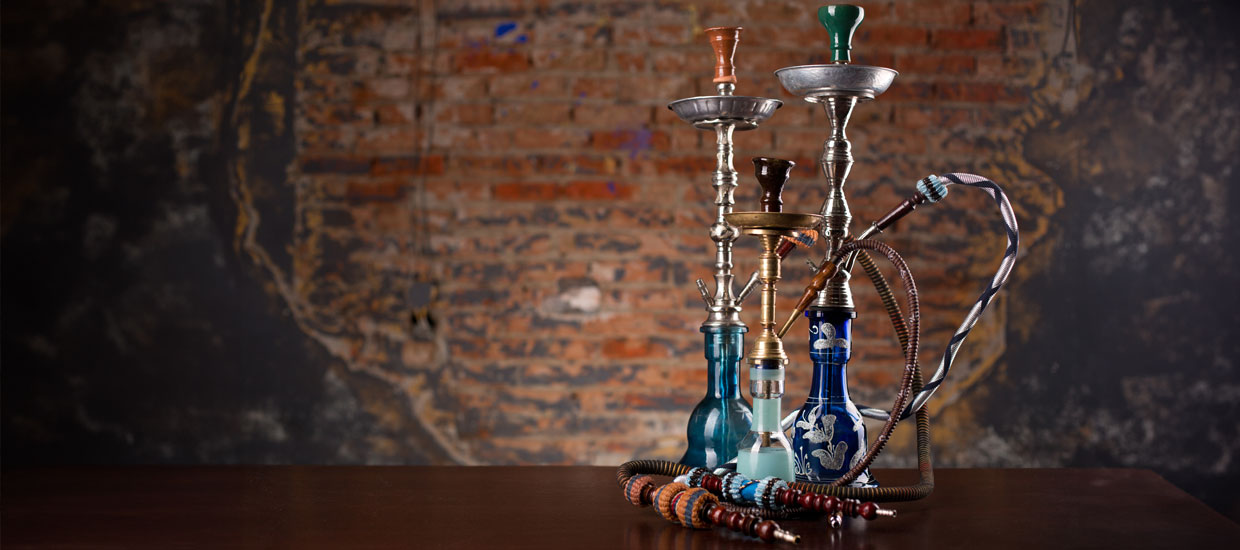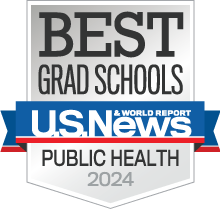This project aims to develop, adapt, and test in a clinical lab study health warning labels for hookah targeting young people in Florida.
The Dramatic Increase in Hookah Use Globally
Hookah epidemiology research shows that hookah usage is on the rise, and its negative health effects act at the levels of individual and population health. The past decade has seen unprecedented increases in the usage of hookah smoking among young adults in the Middle East. The same trend has been observed globally. Factors such as social media and social pressure from friends and family are contributing to the spread of waterpipe smoking. A common societal misconception is that hookah smoking is less harmful than cigarette smoking. Many hookah users utilize it to be less stigmatizing with the numerous flavors that exist, particularly among women.1
In the United States, studies are on-going to determine the true prevalence of hookah smoking in the U.S. population across all ages. However, hookah smoking has been shown to be increasingly widespread among young adults in the U.S., with the majority of past–30-day smokers reporting intermittent use.2 A nationwide survey by the National Tobacco Youth Survey estimates 480,000 high school students used hookah in the past 30 days, and 150,000 among middle school students.3
In Florida, hookah smoking is increasing dramatically, particularly among youth and young adults. Data from the Florida Youth Tobacco Survey show that hookah smoking in 2017 exceeded cigarette smoking and become the No. 2 method of tobacco use among high school students (only behind e-cigarettes). Evidence from college students in Florida shows similar trends. Although, there has been a positive decrease in hookah smoking from 2014-2020. In 2020, statistics from the Florida Youth Tobacco Survey demonstrated that hookah smoking was the No. 3 method of tobacco use among high school students for ever use. However, it is of critical importance to take into account the unusual nature of data collection due to the COVID-19 pandemic, where a number of counties had lower than expected response rates than expected.
Health Risks Associated with Hookah Smoking
Compared to nonsmokers, hookah smokers have 2-3 times increase in respiratory disease (e.g., COPD), 4 times increase in oral cancer risk, 2 times increase in lung cancer, and 3 times increase in cardiovascular disease. 4, 5, 6 Furthermore, the use of charcoal to heat the tobacco in the hookah results in additional exposures to high levels of carbon monoxide, metals, and cancer-causing chemicals. 7, 8 Smoking in a group setting and sharing the same hookah can furthermore, expose users to communicable diseases risks (e.g., tuberculosis, herpes). 9, 10 Hookah smoking also releases secondhand smoke, which can be a health risk particularly to children living in hookah smoking homes. 11
Communicating hookah-associated risks through health warning labels promises to reduce hookah smoking and hookah-related morbidity and mortality in Florida and nationally. In the health warning labels Delphi study conducted by Dr. Asfar and colleagues, five major themes were identified for the negative effects of hookah smoking. Health risks associated with hookah smoking, addiction, harm to others, hookah-specific harm, and hookah smoking harm compared with cigarettes.
- Health risks associated with waterpipe smoking
Evidence suggests a significant association of hookah smoking with lung and oral cancer and a significant association with cardiovascular disease, respiratory diseases, candida and skin disease, and periodontal disease. 12, 6
- Addiction
Hookah smoking delivers the same highly addicting drug that is found in other tobacco products, nicotine. 13
- Harm to others
Children living in homes with hookah smoker home experience a significantly higher intake of nicotine and carcinogens than children living in nonsmoker homes. 14 Babies born to hookah smokers are not only born weighing less than babies born to non-smokers but are at an increased risk for respiratory diseases. 15, 16
- Hookah-specific harm
A number of health risks arise from the charcoal utilized to heat the tobacco by producing high levels of carbon monoxide, metal, and cancer-causing chemicals even after the smoke has passed through the hookah. 10 Evidence from systematic reviews shows that hookah smoking is associated with increased risk of lung cancer, and major cardio-pulmonary diseases. 4, 5, 6 Moreover, unique risks of hookah smoking can stem from the contribution of charcoal (e.g. carcinogens), device and accessories (e.g. infectious disease). 10
- Hookah smoking harm compared to cigarettes
The amount of smoke inhaled during a hookah session is significantly higher than when smoking a cigarette. The increase in carbon monoxide levels is much higher in waterpipe smoking than in cigarette smoking. 17 A one-hour long hookah smoking session involves 200 puffs as opposed to 10-13 puffs from a single cigarette session. 18 Compared to one cigarette, a single hookah session involves exposure to 150-180 times the amount of smoke (≈90,000 ml of smoke for hookah vs. 500-600 ml for cigarettes), 1.7 times the nicotine, 8.4 times the CO, and 36 times the tar. 19
References
- Pratiti R, Mukherjee D. Epidemiology and Adverse Consequences of Hookah/Waterpipe Use: A Systematic Review. Cardiovasc Hematol Agents Med Chem. 2019;17(2):82-93. doi: 10.2174/1871525717666190904151856. PMID: 31483237.
- Salloum RG, Thrasher JF, Getz KR, Barnett TE, Asfar T, Maziak W. Patterns of Waterpipe Tobacco Smoking Among U.S. Young Adults, 2013-2014. Am J Prev Med. 2017 Apr;52(4):507-512. doi: 10.1016/j.amepre.2016.10.015. Epub 2016 Nov 24. PMID: 27890515; PMCID: PMC5516538.
- Wang TW, Gentzke A, Sharapova S, Cullen KA, Ambrose BK, Jamal A. Tobacco Product Use Among Middle and High School Students - United States, 2011-2017. MMWR Morb Mortal Wkly Rep. 2018 Jun 8;67(22):629-633. doi: 10.15585/mmwr.mm6722a3. PMID: 29879097; PMCID: PMC5991815.
- Jawad M, McEwen A, McNeill A, Shahab L. To what extent should waterpipe tobacco smoking become a public health priority? Addiction. 2013 Nov;108(11):1873-84. doi: 10.1111/add.12265. Epub 2013 Jul 17. PMID: 23863044.
- El-Zaatari ZM, Chami HA, Zaatari GS. Health effects associated with waterpipe smoking. Tob Control. 2015 Mar;24 Suppl 1(Suppl 1):i31-i43. doi: 10.1136/tobaccocontrol-2014-051908. Epub 2015 Feb 6. PMID: 25661414; PMCID: PMC4345795.
- Waziry R, Jawad M, Ballout RA, Al Akel M, Akl EA. The effects of waterpipe tobacco smoking on health outcomes: an updated systematic review and meta-analysis. Int J Epidemiol. 2017 Feb 1;46(1):32-43. doi: 10.1093/ije/dyw021. PMID: 27075769.
- Monzer B, Sepetdjian E, Saliba N, Shihadeh A. Charcoal emissions as a source of CO and carcinogenic PAH in mainstream narghile waterpipe smoke. Food Chem Toxicol. 2008 Sep;46(9):2991-5. doi: 10.1016/j.fct.2008.05.031. Epub 2008 Jun 4. PMID: 18573302.
- Nguyen T, Hlangothi D, Martinez RA 3rd, Jacob D, Anthony K, Nance H, Saleh MA. Charcoal burning as a source of polyaromatic hydrocarbons in waterpipe smoking. J Environ Sci Health B. 2013;48(12):1097-102. doi: 10.1080/03601234.2013.824300. PMID: 24007487.
- Martin, J. (2009) Booming hookah biz links China, Iran, Egypt - and Texas CNNMoney
- Center for Diseases Prevention and Control (2018). Hookahs.
- Fromme H, Dietrich S, Heitmann D, Dressel H, Diemer J, Schulz T, Jörres RA, Berlin K, Völkel W. Indoor air contamination during a waterpipe (narghile) smoking session. Food Chem Toxicol. 2009 Jul;47(7):1636-41. doi: 10.1016/j.fct.2009.04.017. Epub 2009 Apr 24. PMID: 19394392.
- Awan KH, Siddiqi K, Patil Sh, Hussain QA. Assessing the Effect of Waterpipe Smoking on Cancer Outcome - a Systematic Review of Current Evidence. Asian Pac J Cancer Prev. 2017 Feb 1;18(2):495-502. doi: 10.22034/APJCP.2017.18.2.495. PMID: 28345836; PMCID: PMC5454749.
- Aboaziza E, Eissenberg T. Waterpipe tobacco smoking: what is the evidence that it supports nicotine/tobacco dependence? Tob Control 2015;24(Suppl 1):i44–i53.
- Kassem NO, Daffa RM, Liles S, Jackson SR, Kassem NO, Younis MA, Mehta S, Chen M, Jacob P 3rd, Carmella SG, Chatfield DA, Benowitz NL, Matt GE, Hecht SS, Hovell MF. Children's exposure to secondhand and thirdhand smoke carcinogens and toxicants in homes of hookah smokers. Nicotine Tob Res. 2014 Jul;16(7):961-75. doi: 10.1093/ntr/ntu016. Epub 2014 Mar 3. PMID: 24590387; PMCID: PMC4072898.
- Tamim H, Yunis KA, Chemaitelly H, Alameh M, Nassar AH; National Collaborative Perinatal Neonatal Network Beirut, Lebanon. Effect of narghile and cigarette smoking on newborn birthweight. BJOG. 2008 Jan;115(1):91-7. doi: 10.1111/j.1471-0528.2007.01568.x. PMID: 18053105.
- Nuwayhid IA, Yamout B, Azar G, Kambris MA. Narghile (hubble-bubble) smoking, low birth weight, and other pregnancy outcomes. Am J Epidemiol. 1998 Aug 15;148(4):375-83. doi: 10.1093/oxfordjournals.aje.a009656. PMID: 9717882.
- Jacob P 3rd, Abu Raddaha AH, Dempsey D, Havel C, Peng M, Yu L, Benowitz NL. Nicotine, carbon monoxide, and carcinogen exposure after a single use of a water pipe. Cancer Epidemiol Biomarkers Prev. 2011 Nov;20(11):2345-53. doi: 10.1158/1055-9965.EPI-11-0545. Epub 2011 Sep 9. PMID: 21908725; PMCID: PMC3210932.
- Cobb C, Ward KD, Maziak W, Shihadeh AL, Eissenberg T. Waterpipe tobacco smoking: an emerging health crisis in the United States. Am J Health Behav. 2010 May-Jun;34(3):275-85. doi: 10.5993/ajhb.34.3.3. PMID: 20001185; PMCID: PMC3215592.
- Cobb CO, Shihadeh A, Weaver MF, Eissenberg T. Waterpipe tobacco smoking and cigarette smoking: a direct comparison of toxicant exposure and subjective effects. Nicotine Tob Res. 2011 Feb;13(2):78-87. doi: 10.1093/ntr/ntq212. Epub 2010 Dec 2. PMID: 21127030; PMCID: PMC3107609.
This grant is funded by the James and Esther King program of the Florida Department of Health, award 20K10, in collaboration with Florida International University (FIU), the University of Memphis, Golin, Truth Initiative, and the Consortium for Tobacco-Free Miami-Dade.
Collaborators
Hookah and E-cigarette Health Communication Group
The Hookah and E-cigarettes Health Communication Group is a collaborative group of tobacco control advocacy specialists and investigators at the University of Miami (Dr. Asfar), Florida International University (Drs. Maziak and Bursac), Florida Tobacco Free Workgroup (Dr. Thurer), tobacco control media and advocacy specialist (Mr. Abrams; Golin), youth-oriented anti-tobacco campaigns expert (Dr. Vallone; Truth Initiative), health communication specialist from the University of Memphis (Dr. Schmidt), FDA legal advisor (Mr. Lindblom), tobacco products regulatory scientist (Dr. Eissenberg), and a national and international authority on health communication for tobacco products, with a focus on e-cigarettes (Dr. Noar).
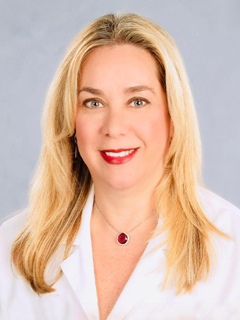
Taghrid Asfar, M.D., M.S.P.H.
Principal Investigator
Professor, Department of Public Health Sciences
Member, Sylvester Comprehensive Cancer Center University of Miami Miller School of Medicine
tasfar@miami.edu
(305) 243-3826
Dr. Asfar has extensive experience in tobacco control research nationally and internationally. Since 2001, her tobacco control work has been funded continuously by the NIH and conducted both in the United States and the Eastern Mediterranean Region, including Syria, Lebanon, and Tunisia. This work involves epidemiological and qualitative studies of tobacco use, randomized clinical trials of smoking cessation interventions, and tobacco regulatory research in health communication approaches targeting emerging tobacco products such as e-cigarettes and hookahs. She has two overarching aims in her research: (1) improving smoking cessation treatment among socially disadvantaged and high-risk populations (i.e., low-income adults, ethnic minorities, HIV patients, cancer survivors); and (2) preventing tobacco use among youth and young adults by advancing health communication strategies, such as health warning labels. She has more than 60 peer-reviewed publications (Asfar T - Search Results - PubMed) and many of these are in leading, high impact journals in this field (i.e., Tobacco Control; Nicotine and Tobacco Research; Addiction; and the Cochrane Tobacco Addiction Group). Dr. Asfar has currently five active grants as PI including:
- 1R01DA051836: Developing and testing health warning labels on the ENDS (electronic cigarette) device
- 20K10 James and Esther King Biomedical Research Program: Developing and testing waterpipe-specific health warning labels targeting young people in Florida
- R01TW010654-01: Translating Evidence and Building Capacity to Support Waterpipe Control in the Eastern Mediterranean
- CFAR Pilot Award P30AI07396: “Mind2Quit” Developing A Mindfulness Smartphone App for Smoking Cessation for People Living with HIV
- Sylvester Cancer Center Pilot Award P30CA240139: Smartphone Application versus In-Person Mindfulness-Based Smoking Cessation Intervention for Young Cancer Survivors: Reach versus Effectiveness
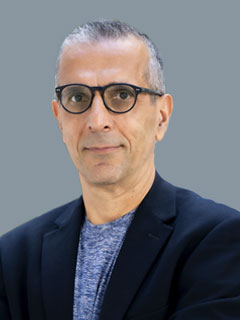
Wasim Maziak, M.D., Ph.D.
Co-Investigator of the James & Esther King Hookah Health Warning Labels Study and National Institutes of Health E-cigarette Health Warning Labels Study
Robert Stempel College of Public Health and Social Work, Florida International University
wmaziak@fiu.edu
Dr. Wasim Maziak is a professor of Epidemiology, Director of the Clinical Research Lab for Tobacco Smoking at Florida International University, and Founder of the Syrian Center for Tobacco Studies. Dr. Maziak has extensive experience in tobacco control research and has published over 200 peer-reviewed scientific reports, including contributions in Science, Nature, Lancet, and British Medical Journal. His focus has been on emerging tobacco products such as e-cigarettes and hookah (Waterpipe), especially risk communication strategies targeting young users. He has been continuously funded by NIH since 2001 for tobacco control research.
Dr. Maziak’s Clinical Research Laboratory is located at the Academic Health Center 4 at FIU MMC campus. This state-of-the-art facility is fully equipped with five computer stations, blood drawing and specimen processing areas, fully furnished physical examination station, real-time monitoring equipment for vital signs, subjective measures assessment capability, and the latest in smoking topography technology (i.e., puff count, puff volume, average flow, puff duration, interpuff interval). This laboratory is devoted to assessing the impact of emerging tobacco products among young people such as waterpipe (hookah) and electronic nicotine delivery systems (i.e., ENDS, e-cigarettes). The research team is the first to evaluate this highly addictive and misperceived tobacco use method in a clinical lab setting, as its popularity grows statewide and nationally—especially among youth.
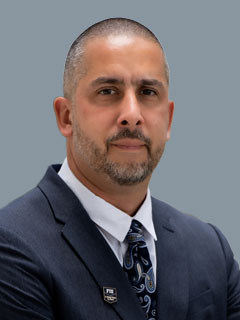
Zoran Bursac, Ph.D., M.P.H.
Co-Investigator/Biostatistician in James & Esther King Hookah Health Warning Labels Study and the Construction Workers Smoking Cessation Program
Professor and Chair of the Department of Biostatistics, Robert Stempel College of Public Health and Social Work, Florida International University
wmaziak@fiu.edu
Dr. Bursac is a Professor and Chair of the Department of Biostatistics and Director of the Biostatistics Consulting Service Center at the Stempel College of Public Health, at Florida International University. Throughout his career, Dr. Bursac has authored/co-authored more than 100 peer-reviewed publications in clinical medicine, biostatistics, and diverse areas in public health. He will serve as the biostatistician in our James and Esther King Waterpipe Health Warning Labels study. He will also be consulting on the biostatistics aspect of the construction workers smoking cessation program.
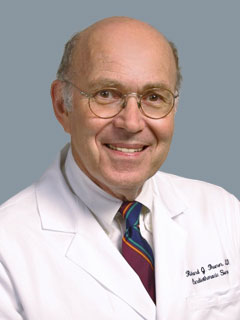
Richard J. Thurer, M.D.
Collaborator in the James & Esther King Hookah Health Warning Labels Study
Cardiothoracic Surgery Specialist
Professor of Thoracic Surgical Oncology, Professor of Surgery Emeritus, Senior Associate Dean for Faculty Affairs, University of Miami Miller School of Medicine
rthurer@miami.edu
Dr. Richard J Thurer is a Professor at the Miller School of Medicine who has focused on a number of research areas throughout his career. These research areas include cardiac electrophysiology, largely involving device use and development, combined modality therapy for lung cancer, lung cancer screening utilizing CT scanning, and developing patient aids in lung cancer screening. Dr. Thurer also plays an active community role in tobacco control, serving as Chair of the Tobacco Free Workgroup and being a member of the Executive Board of the Consortium for a Healthier Miami-Dade. In this project, he will collaborate with Asfar and Maziak to disseminate the research findings, increase awareness about the harmful effects of waterpipe in the general public, and promote health warning labels use for waterpipe control in Florida among our local community leaders through our community partner (e.g., SWAT team: Students Work Against Tobacco)

Michael Schmidt, Ph.D., M.G.D.
Collaborator/Graphic Designer in the James & Esther King Hookah Health Warning Labels Study and National Institutes of Health E-cigarette Health Warning Labels Study
Graphic Designer, Associate Professor, School of Public Health, The University of Memphis
mschmidt@memphis.edu
Dr. Michael Schmidt is a social and behavioral research scientist in the field of public health, graphic designer, associate professor of design in the Department of Art, and affiliate faculty member in the School of Public Health at the University of Memphis. Dr. Schmidt's research areas include substance use disorders, intimate partner violence, and child and family wellbeing. Dr. Schmidt serves as graphic designer on this project, assisting with conceptual development and providing photo editing, typography, and layout design for the health warning labels.

Ian Abrams
Collaborator in the James & Esther King Hookah Health Warning Labels Study
Executive Director at Golin
iabrams@golin.com
Ian Abrams, an Executive Vice President at Golin, a global communications agency, has spent his 20+ years at the firm managing the agency’s government and social marketing projects. He is a seasoned marketing communications professional with more than two decades experience across multiple disciplines. Ian has led the agency’s work on iconic projects including the renowned truth® anti-tobacco campaign, the CDC's Tips From Former Smokers® campaign, and the rebranding of the Florida Lottery and the YMCA of the USA. He has considerable experience building communications and social marketing programs for government, non-profit, and corporate clients including U.S. Pharmacopiea, NASA, YMCA of the USA, the U.S. Navy Recruiting Command, the Office of the U.S. Surgeon General, Florida Lottery, the National Heart Lung and Blood Institute (NHLBI), Adopt-A-Waterway, the University of Miami, The Florida Department of Health, Hospice Foundation of America, and The Children’s Trust, along with anti-tobacco campaigns for various issues in a dozen states and numerous countries.

Barbara Lopez
Collaborator in the James & Esther King Hookah Health Warning Labels Study
Manager at Golin
blopez@golin.com
Barbara Lopez is a manager at Golin, with three years of experience in the industry. Barbara’s primary focus is on public health communications, specifically as it relates to healthcare provider outreach. Barbara’s current clients include the Centers for Disease Control and Prevention’s Tips From Former Smokers® Campaign and Tobacco Free Florida, the statewide tobacco control program run by the Florida Department of Health. Barbara leads Tobacco Free Florida’s healthcare provider initiative. Barbara leads The Bridge, a daily media and relevancy action plan customized for the Centers for Disease Control and Prevention’s Office on Smoking and Health. Finally, Barbara leads the creation of the social media analytics report for the Centers for Disease Control and Prevention’s Office on Smoking and Health social media channels.

Elizabeth Hair, Ph.D.
Collaborator in the James & Esther King Hookah Health Warning Labels Study
Truth Initiative
ehair@truthinitiative.org
Elizabeth Hair, Ph.D., is a Senior Vice President for the Truth Initiative Schroeder Institute. Hair oversees the health communication research including the formative research of the truth® campaign and the longitudinal evaluation of the campaign’s effectiveness in communicating anti-smoking messages to young adults. In addition, she conducts research on youth tobacco and e-cigarette product use. She has over two decades experience in conducting research on child and family well-being, including issues related to health and mental health, health risk behaviors, vulnerable youth, and the transition to adulthood.
Multiple surveillance studies from Florida show that hookah smoking and e-cigarettes have become some of the leading tobacco use methods among youth.
Under the Florida Law, the sale of Tobacco products to individuals under the age of 18 is not permitted.
Within the state of Florida, firms, corporations, or individuals who sell tobacco products or have tobacco product vending machines on their premises, must obtain a retail tobacco products dealer permit.
Any retailer that sells nicotine products or nicotine dispensing devices is required to provide a clear and visible point of sale material& at the checkout counter that includes the following statement:
IF YOU WERE NOT BORN BEFORE THIS DATE
(insert date and applicable year)
YOU CANNOT BUY NICOTINE PRODUCTS OR NICOTINE DISPENSING DEVICES
Sales from vending machines are only acceptable from a machine that is equipped with an operational lockout device under the control of the dealer, dealer’s agent, or employee.
There are a number ofprocedures to abide by to qualify as a retail tobacco product dealer. For instance, offering training programs that address the use and sale of tobacco products to all employees.
Resources
FDA Requirements
- Schmidt, M., Asfar, T., & Maziak, W. (2022). Graphic Design in Public Health Research: A Multiyear Pictorial Health Warning Label Initiative and Recommendation for Sustained Interdisciplinary Collaboration. Visible Language, 56(2), 54-83.
- Ebrahimi Kalan, M., Behaleh, R., DiFranza, J. R., Bursac, Z., Ben Taleb, Z., Tleis, M., Asfar, T., Nakkash, R., Ward, K. D., Eissenberg, T., & Maziak, W. (2020). Natural Course of Nicotine Dependence Among Adolescent Waterpipe and Cigarette Smokers. The Journal of adolescent health : official publication of the Society for Adolescent Medicine, 67(6), 859– 867. https://doi.org/10.1016/j.jadohealth.2020.04.030
- Maziak, W., Osibogun, O., & Asfar, T. (2019). Waterpipe smoking: the pressing need for risk communication. Expert review of respiratory medicine, 13(11), 1109- 1119. https://doi.org/10.1080/17476348.2019.1668271
- Maziak, W., Ben Taleb, Z., Ebrahimi Kalan, M., Eissenberg, T., Thrasher, J., Shihadeh, A., & Asfar, T. (2019). Pictorial health warning labels on the waterpipe device are effective in reducing smoking satisfaction, puffing behaviour and exposure to CO: first evidence from a crossover clinical laboratory study. Tobacco control, 28(e1), e37– e42. https://doi.org/10.1136/tobaccocontrol-2018-054682
- Asfar, T., Ben Taleb, Z., Osibogun, O., Ruano-Herreria, E. C., Sierra, D., Ward, K. D., Salloum, R. G., & Maziak, W. (2019). How Do Waterpipe Smoking Establishments Attract Smokers? Implications for Policy. Substance use & misuse, 54(4), 560– 571. https://doi.org/10.1080/10826084.2018.1524489
- Ben Taleb, Z., Laestadius, L. I., Asfar, T., Primack, B. A., & Maziak, W. (2019). #Hookahlife: The Rise of Waterpipe Promotion on Instagram. Health education & behavior : the official publication of the Society for Public Health Education, 46(1), 106– 113. https://doi.org/10.1177/1090198118779131
- Salloum, R. G., Asfar, T., & Maziak, W. (2016). Toward a Regulatory Framework for the Waterpipe. American journal of public health, 106(10), 1773– 1777. https://doi.org/10.2105/AJPH.2016.303322
- Salloum RG, Maziak W, Hammond D, et al. Eliciting preferences for waterpipe tobacco smoking using a discrete choice experiment: implications for product regulation. BMJ Open 2015;5:e009497. doi:10.1136/bmjopen-2015- 009497
- Maziak, W., Jawad, M., Jawad, S., Ward, K. D., Eissenberg, T., & Asfar, T. (2015). Interventions for waterpipe smoking cessation. The Cochrane database of systematic reviews, 2015(7), CD005549. https://doi.org/10.1002/14651858.CD005549.pub3
- Asfar, T., Al Ali, R., Rastam, S., Maziak, W., & Ward, K. D. (2014). Behavioral cessation treatment of waterpipe smoking: The first pilot randomized controlled trial. Addictive behaviors, 39(6), 1066–1074. https://doi.org/10.1016/j.addbeh.2014.02.012
- Maziak, W., et al. (2011). "Nicotine exposure in daily waterpipe smokers and its relation to puff topography." Addictive Behaviors 36(4): 397- 399. https://doi.org/10.1016/j.addbeh.2010.11.013
- Maziak, W., et al. (2009). "CO exposure, puff topography, and subjective effects in waterpipe tobacco smokers." Nicotine & tobacco research : official journal of the Society for Research on Nicotine and Tobacco 11(7): 806-811. https://doi.org/10.1093/ntr/ntp066
- Asfar, T., Ward, K. D., Eissenberg, T., & Maziak, W. (2005). Comparison of patterns of use, beliefs, and attitudes related to waterpipe between beginning and established smokers. BMC public health, 5, 19. https://doi.org/10.1186/1471-2458-5-19




